12 Dish Garden Ideas With Succulents And Mini Plants
Discover 12 stunning dish garden ideas featuring succulents and mini plants that bring natural charm to any space. Perfect for tabletops, windowsills, or gifts, these low-maintenance mini gardens blend texture, color, and creativity. Learn easy design tips to craft your own stylish, space-saving indoor garden that thrives year-round with minimal care.
Why Dish Gardens Work (And Why You’ll Want More Than One)
You combine slow-growing plants with shallow containers and boom—instant living decor. They fit on shelves, desks, even that weird corner of your kitchen you never know what to do with. Plus, you water less, you fuss less, and everything still looks polished. Key perks:
- Low-maintenance: Succulents and minis thrive with chill care.
- Small footprint: Big impact on tiny surfaces.
- Design freedom: You control color, texture, and theme.
Prep: What You Need Before You Plant
Grab a shallow container, potting supplies, and your tiny plant army.
Don’t overthink it—just get the essentials right. Materials checklist:
- Container: 2–4 inches deep, with a drainage hole or a drainage layer (pebbles + activated charcoal).
- Soil: Gritty cactus/succulent mix for fast drainage.
- Plants: 3–7 small succulents/mini plants per container, depending on size.
- Top dressing: Pebbles, sand, crushed shells, or moss for a finished look.
- Tools: Spoon, chopsticks, soft brush, and a squeeze bottle.
Planting in Non-Draining Bowls
You can do it, but layer smart. Add 1 inch of pebbles, sprinkle charcoal to reduce funk, then soil. Water sparingly.
And promise me you won’t drown it.
12 Dish Garden Ideas You’ll Actually Want to Make
1) Desert Sunset Bowl

Play with warm tones—think oranges, reds, and deep greens. Use Echeveria, Haworthia, and a small rust-colored rock. Top with peach or tan gravel for the “sand dune at golden hour” vibe.
2) Modern Monochrome

Stick to greens and silvers: Senecio ‘Silver Gloves’, Haworthia attenuata, and Gasteria.
Use a matte black shallow bowl and white gravel. Minimal effort, maximum chic.
3) The Tiny Jungle (But Keep It Dry)

Mix textural succulents that feel lush: Crassula ovata ‘Hobbit’, Aeonium ‘Kiwi’, and Kalanchoe tomentosa. Add a mini figurine or driftwood for that explorer-core energy.
4) Coffee Table Zen Garden
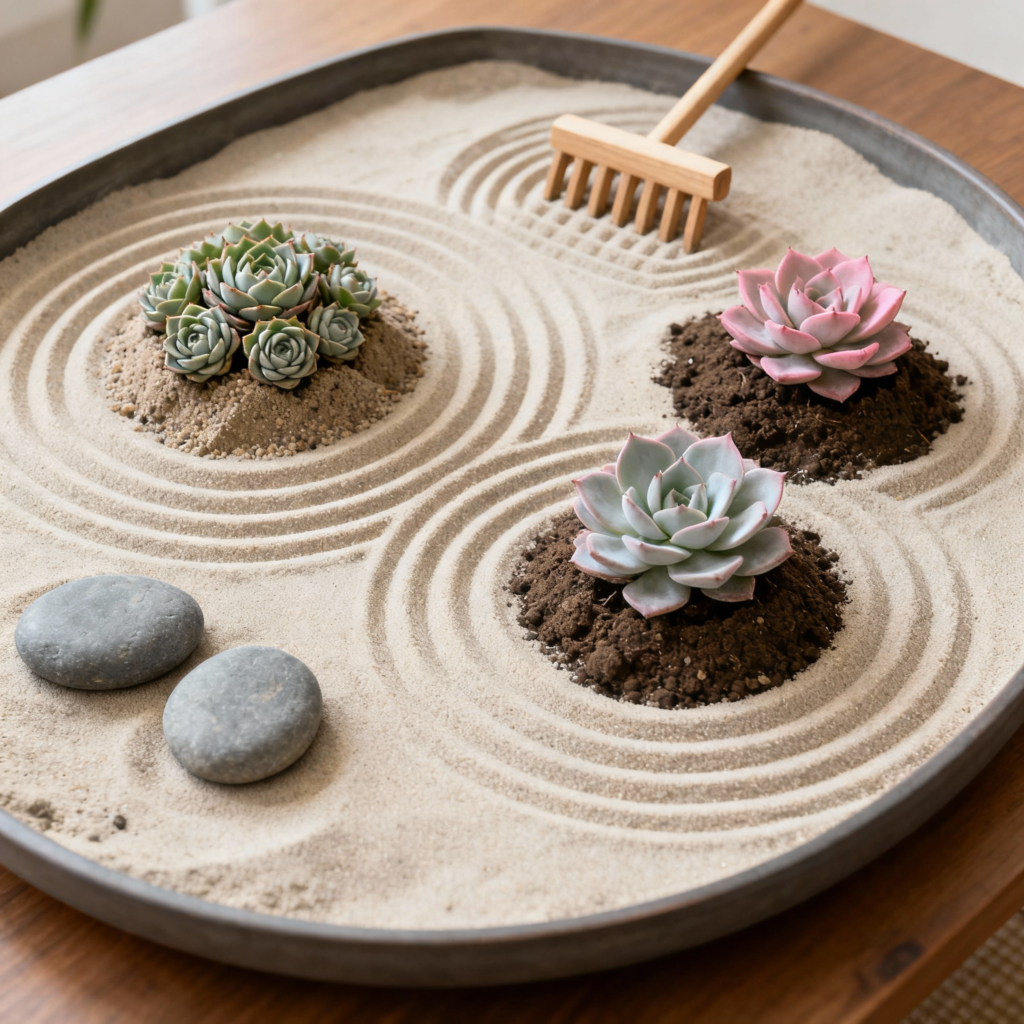
Rakeable sand?
Yes. Nestle a few low growers like Sempervivum and Graptopetalum into mounds of gritty soil, then surround with fine sand. Add two smooth stones and you’re basically a calm person now.
5) Fairy Courtyard

Go whimsical with a micro path of crushed granite and a tiny door prop. Use small rosette succulents and miniature groundcovers like Sedum ‘Little Missy’. Cue the compliments.
6) Windowsill Citrus Pop
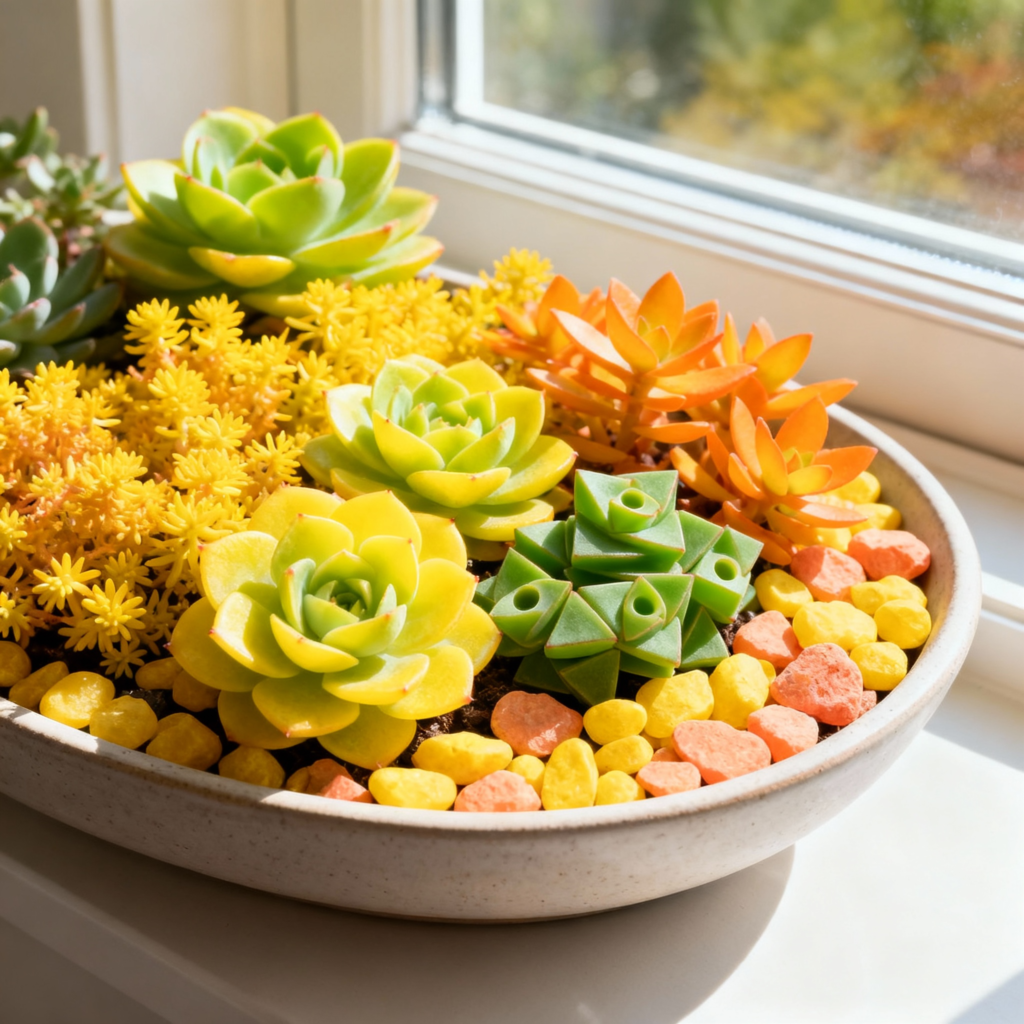
Choose bright varieties: Echeveria ‘Lemon Lime’, Sedum adolphii, and Crassula perforata.
Yellow or coral pebbles pull it together without being loud.
7) Terracotta Trio in One Dish
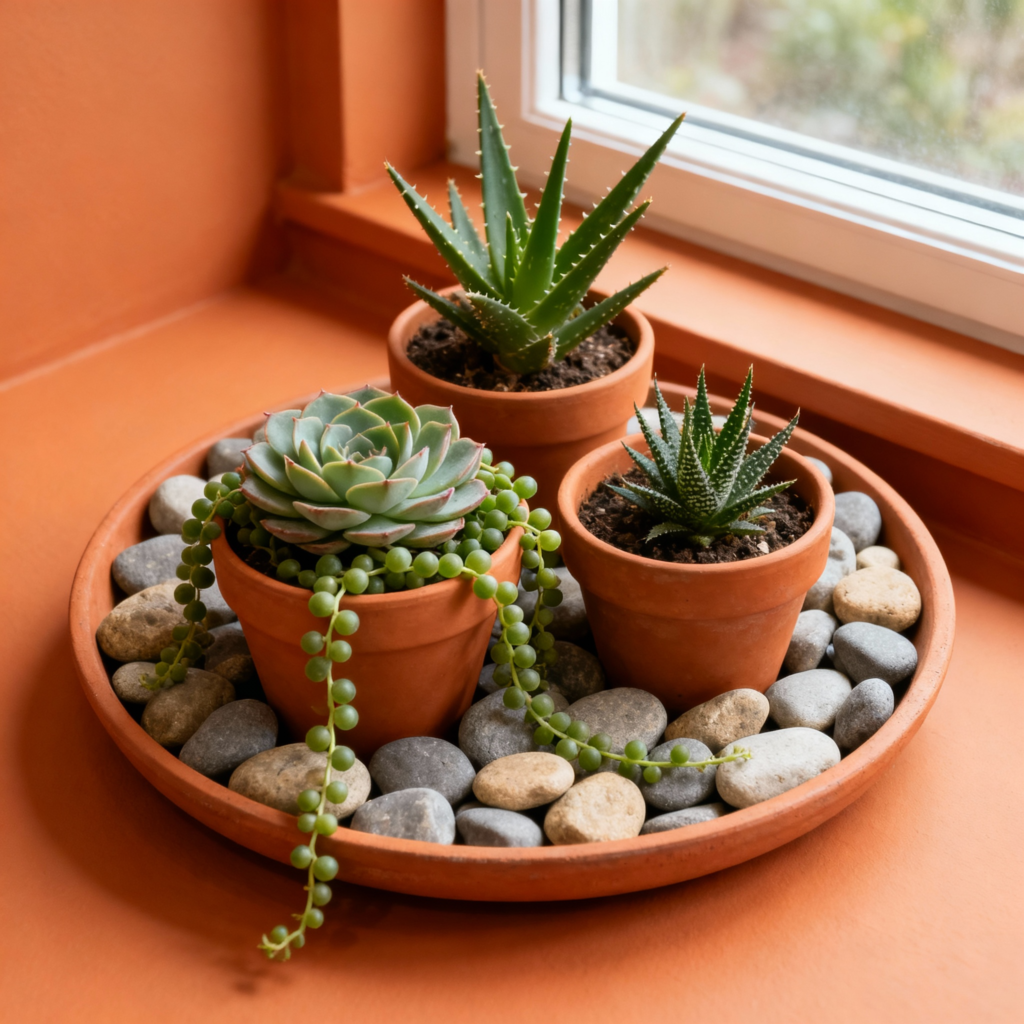
Group three terracotta pots inside a larger tray filled with pebbles. Plant each with a different texture—one rosette, one trailing, one upright. Looks curated, hides overwatering sins.
FYI, it’s a great gift.
8) Beach Day Mini-Scape
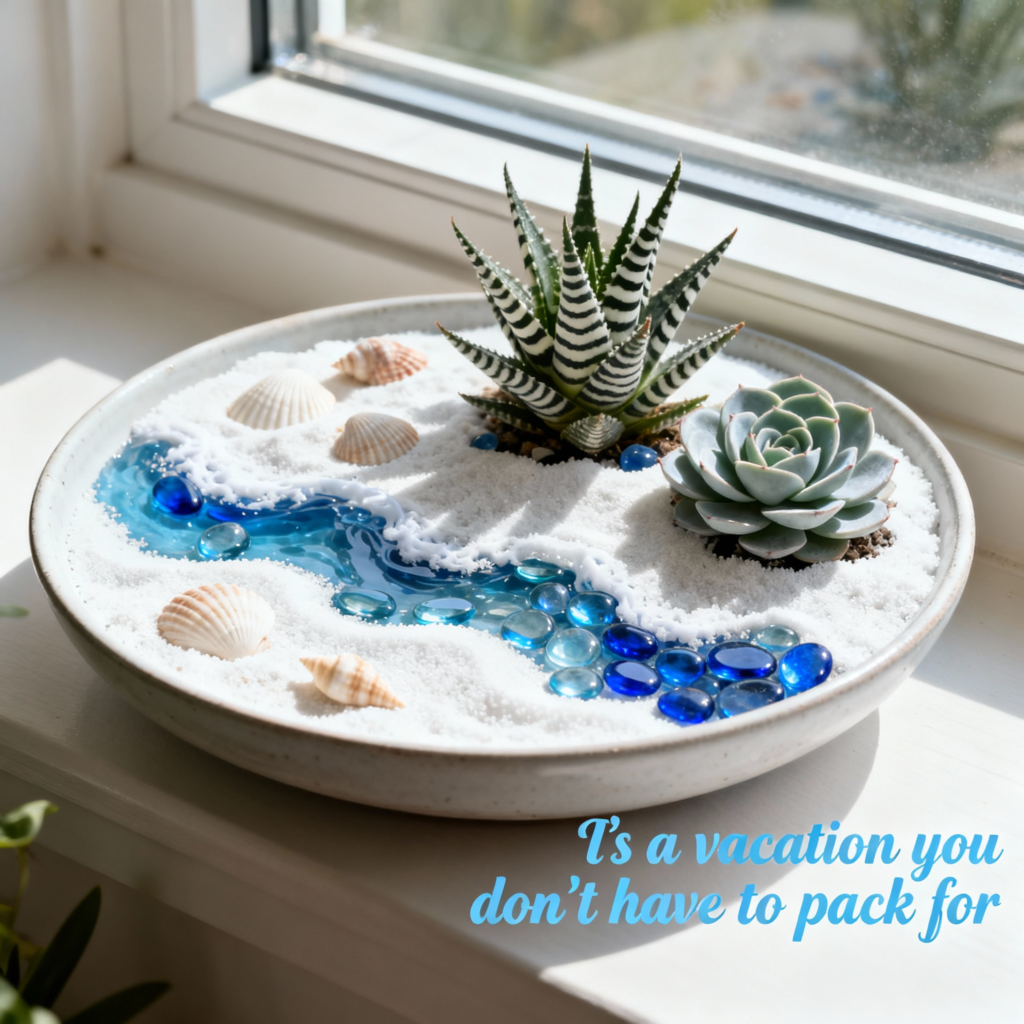
White sand top dressing, a few shells, and blue glass pebbles as “water.” Use Haworthia and Graptosedum to keep it tidy. It’s a vacation you don’t have to pack for.
9) The Moody Stone Garden
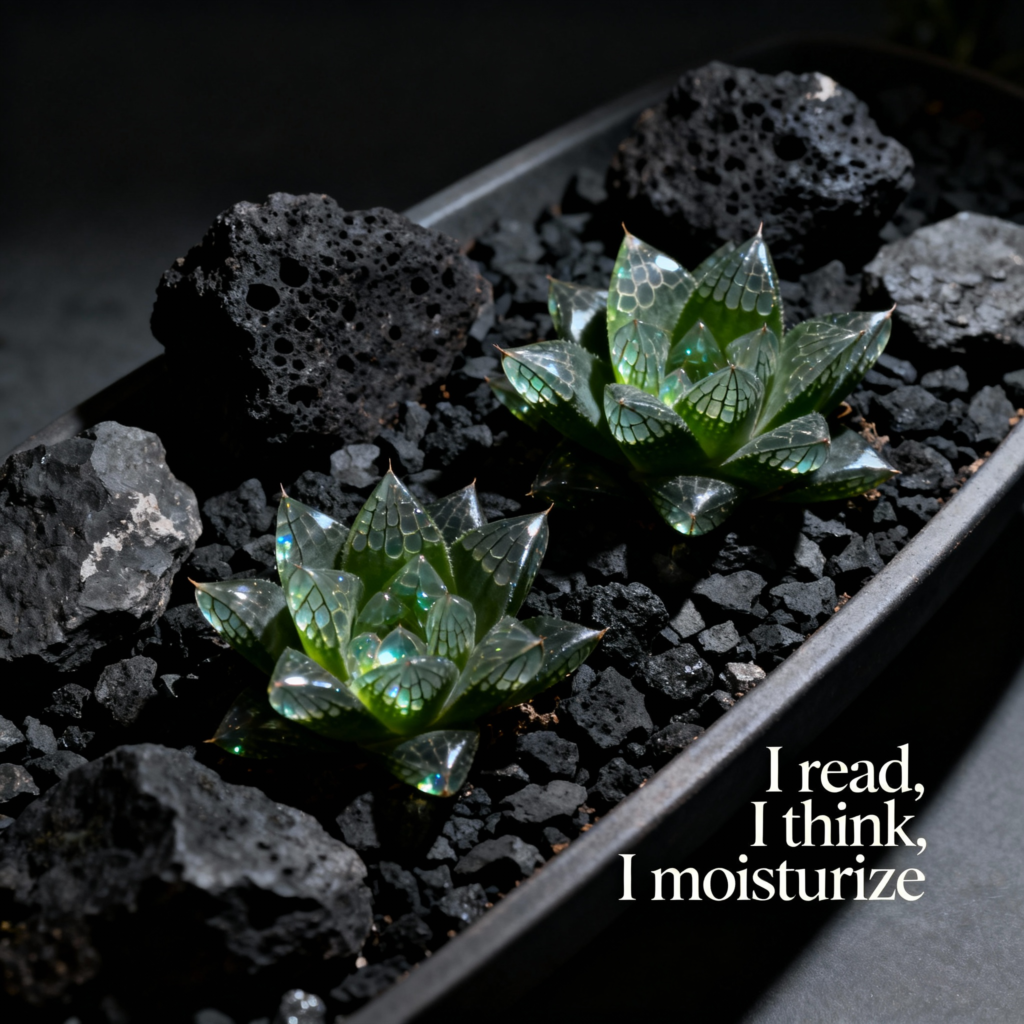
Dark basalt rocks + deep green plants like Haworthia cooperi. Add charcoal gravel for drama.
The vibe says “I read, I think, I moisturize.”
10) Stringy & Dangly
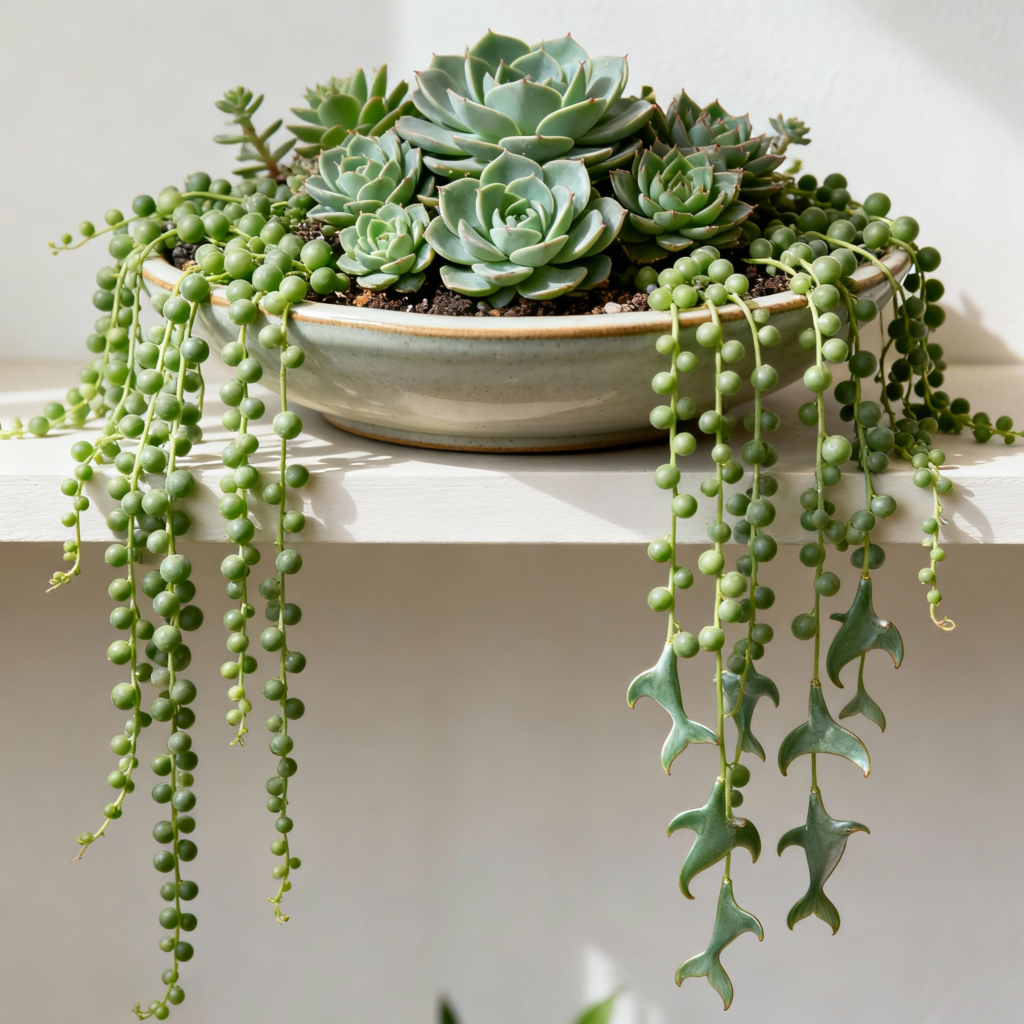
Dish with a gentle rim, planted with compact succulents in the center and String of Pearls or String of Dolphins draping over the edge. Hang it or let it spill from a shelf.
11) Office-Proof Minimalist
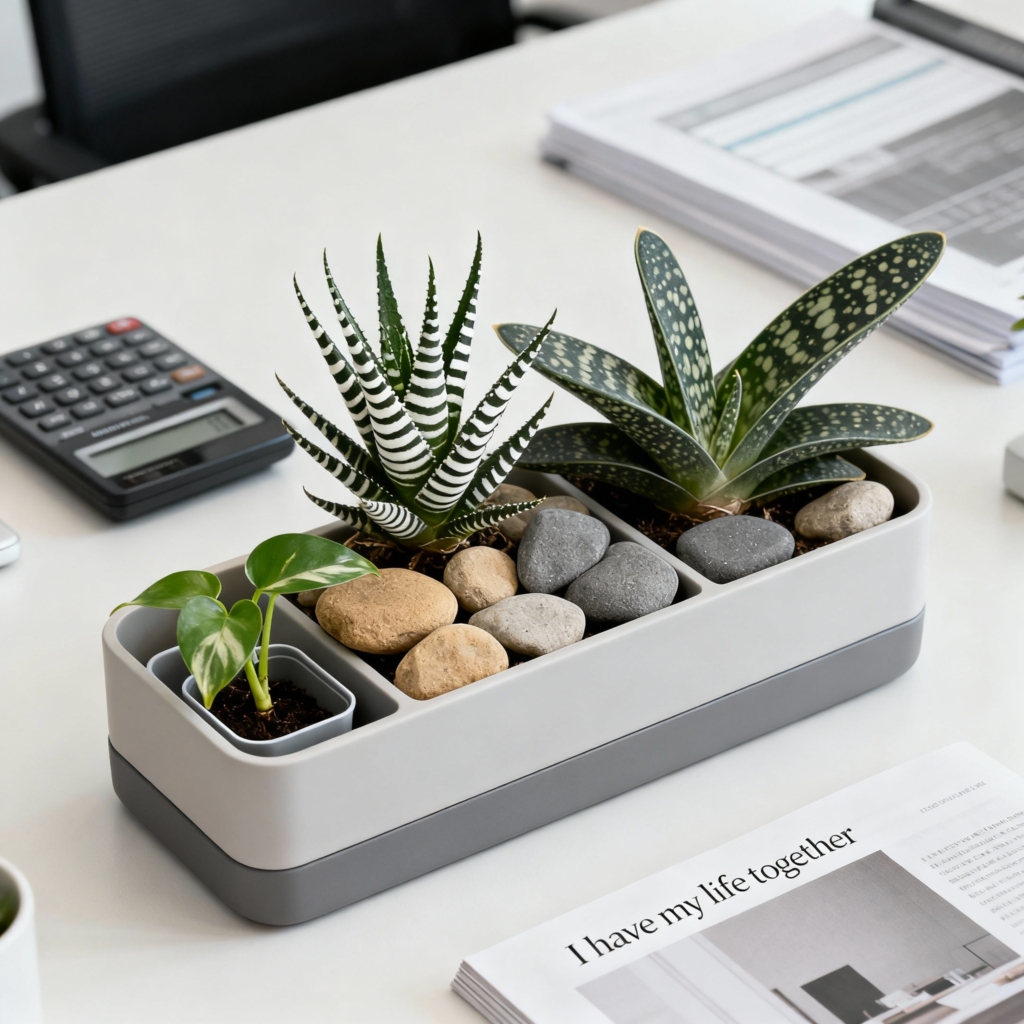
Low light? Choose Zebra Haworthia, Gasteria, and a pothos cutting in a separate mini insert (yes, cheating, but cute).
Neutral stones and a clean line layout keep it tidy.
12) Color-Shift Palette
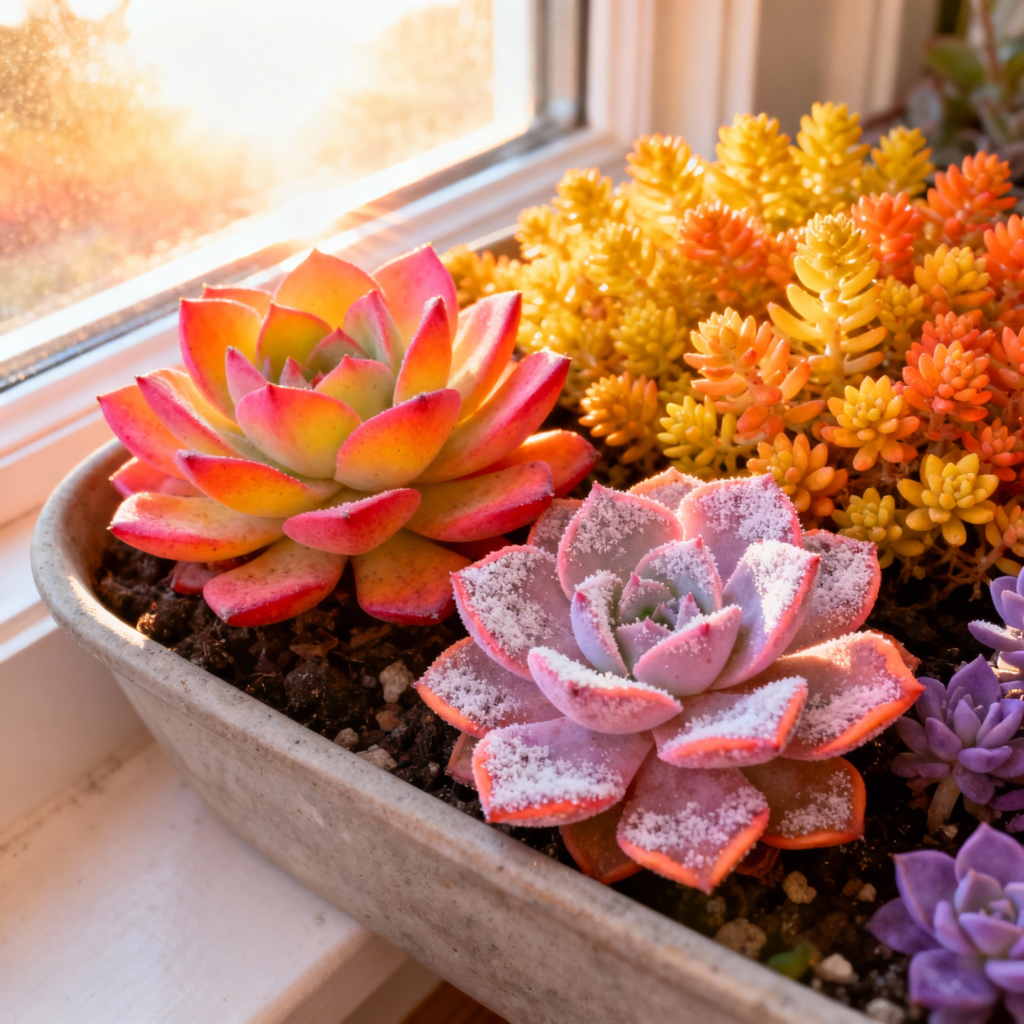
Pick plants that change with sun: Graptosedum ‘California Sunset’, Echeveria ‘Afterglow’, and Sedum nussbaumerianum. Place near bright light and watch the colors pop over weeks. Nature’s slow-burn glow up.
Design Tips That Make You Look Like You Know What You’re Doing
Use a focal point. A hero rosette or a unique rock anchors the design.
Arrange supporting plants around it in odd numbers. Vary heights and textures. Mix upright, rosette, and trailing forms. Combine fuzzy, smooth, and spiky. Leave breathing room. Plants grow. Save space so nobody starts a turf war in two months. Pick a palette. Choose two to three colors and stick with them.
Chaos reads as clutter.
Plant Pairings That Never Fail
- Rosettes: Echeveria + Sempervivum + Graptopetalum
- Uprights: Haworthia + Crassula ovata ‘Gollum’
- Trailers: Sedum morganianum (Burro’s tail) + String of Pearls
- Accent textures: Kalanchoe tomentosa (fuzzy) + Senecio serpens (powdery blue)
Light, Water, Repeat (But Not Too Much)
Succulents love bright light. Indoors, give them a south or west window. Outdoors, give morning sun and afternoon shade if you live somewhere fiery. Watering rhythm:
- Check first: Soil must feel completely dry.
- Water deeply: Saturate until excess drains or the soil feels evenly moist.
- Then wait: Usually every 2–4 weeks indoors, weekly-ish outdoors in summer.
Soil and Drainage 101
Use a gritty mix: 2 parts cactus soil, 1 part pumice/perlite, 1 part coarse sand.
If your container lacks drainage, go lighter on water and heavier on patience.
Troubleshooting: When Your Mini Garden Throws Attitude
Stretched, leggy plants? They need more light. Move closer to a window or add a grow light. Mushy leaves or black stems? That’s rot. Cut back watering, remove soggy bits, and let the soil dry. Wrinkly leaves? That’s thirst.
Water thoroughly once the soil dries. Pests (mealybugs, gnats)? Dab mealybugs with alcohol on a cotton swab. Let soil dry and add yellow sticky traps for gnats.
Repotting and Refreshing
Every 8–12 months, lift the plants, shake off old soil, trim dead leaves, and reset the design. It keeps the garden fresh and gives you a chance to expand your tiny empire.
FAQs
Which succulents work best for dish gardens?
Compact types rule: Echeveria, Haworthia, Gasteria, Graptopetalum, and small Crassulas.
They stay manageable, look great together, and don’t crowd the dish immediately.
Can I mix succulents with mini non-succulent plants?
Yes, but match water needs. Pair drought-tolerant minis like small Sansevieria or Peperomia with succulents. Skip thirsty plants like fittonia in the same soil—give them their own pot or a separate insert.
How do I keep the top dressing from getting gross?
Use mineral materials (gravel, sand, crushed granite) and water carefully.
If algae shows up, reduce watering, increase light, and swap the top layer. Activated charcoal under the soil helps too.
What size dish should I use?
Start with 8–12 inches wide and 2–4 inches deep. That gives enough room for variety without turning into a cactus crowd crush.
How much light do they need?
Bright, indirect light for most.
Aim for 6+ hours near a sunny window. If they stretch or lose color, bump the light or add a small grow light. Easy fix.
Do I need fertilizer?
Lightly, during spring and summer.
Use a diluted succulent fertilizer (about 1/4 strength) once a month. Skip in fall and winter when growth slows.
Wrap-Up: Tiny Gardens, Big Joy
Dish gardens let you play designer, botanist, and tiny world builder all at once—and they don’t eat your schedule. Pick a theme, choose a few complementary plants, and keep the watering can on a short leash.
Before you know it, you’ll have a lineup of mini masterpieces. IMO, that’s the best kind of hobby: low effort, high satisfaction, and very cute to look at.
